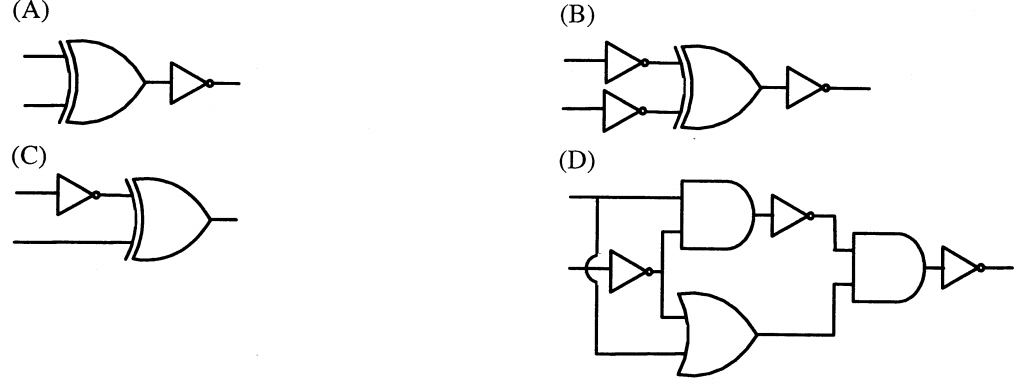Logic functions and Minimization
Question 1
Consider the Boolean function z(a,b,c).
 Which one of the following minterm lists represents the circuit given above ?
Which one of the following minterm lists represents the circuit given above ?
 Which one of the following minterm lists represents the circuit given above ?
Which one of the following minterm lists represents the circuit given above ?Question 2
Let p and q be two propositions. Consider the following two formulae in propositional logic.
S1: (¬p∧(p∨q))→q S2: q→(¬p∧(p∨q))Which one of the following choices is correct?
Question 3
Consider the following Boolean expression.
F=(X+Y+Z)(X\'+Y)(Y\'+Z)Which of the following Boolean expressions is/are equivalent to F\' (complement of F)?
Question 4
Which one of the following expressions does NOT represent exclusive NOR of x and y?
Question 5
What is the minimal form of the Karnaugh map shown below? Assume that X denotes a don’t care term.
[caption width="800"].png) [/caption]
[/caption]Question 6
Question 7
The simplified SOP (Sum Of Product) form of the boolean expression (P + Q\' + R\') . (P + Q\' + R) . (P + Q + R\') is
Question 9
What is the minimum number of gates required to implement the Boolean function (AB+C)if we have to use only 2-input NOR gates?
Question 10
In the Karnaugh map shown below, X denotes a don\'t care term. What is the minimal form of the function represented by the Karnaugh map?
A) B) C) D)
There are 104 questions to complete.
Last Updated :
Take a part in the ongoing discussion
